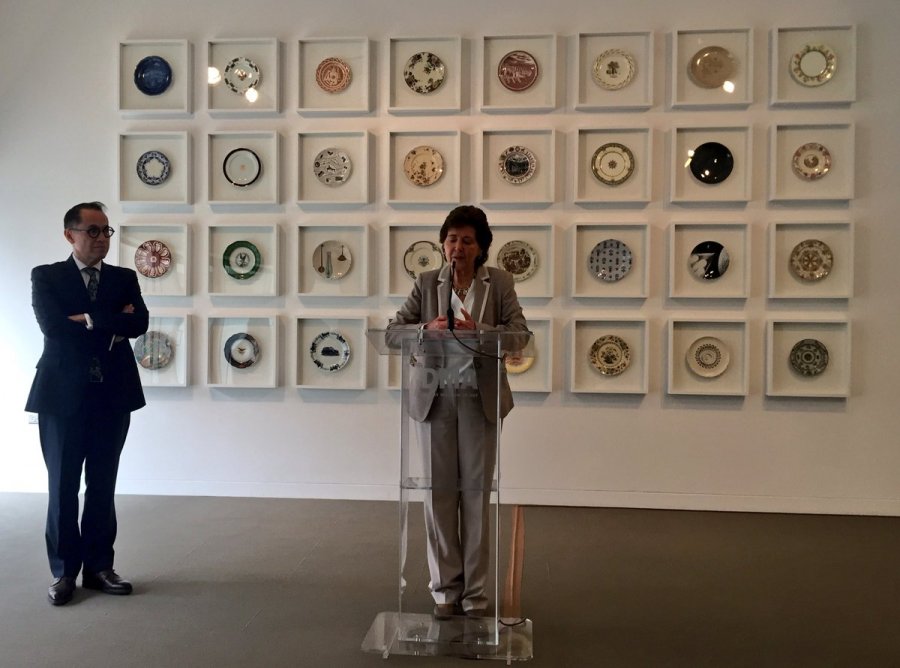Noticias
Over 200 works will be exhibited until July 16th
Opening of the exhibition, Mexico 1900-1950: Diego Rivera, Frida Kahlo, José Clemente Orozco and the Avant-Garde, at the Dallas Museum of Art
March 09, 2017Dallas, Texas, USA - The major retrospective of Mexican art from the first half of the twentieth century that invites to reviewing the creation of the time, Mexico 1900-1950: Diego Rivera, Frida Kahlo, Jose Clemente Orozco and the Avant-garde , was opened on March 8th at the Dallas Museum of Art, Texas, USA, where it will remain until July 16th.
After its successful presentation at the Grand Palais in Paris, France, where it was visited by over 230,000 people, the exhibition, curated by Agustín Arteaga, arrives in the Texan city with more than 200 works featuring painting, sculpture, photography, drawing and films that document Mexico’s artistic Renaissance.
Secretary of Culture of Mexico, Maria Cristina García Cepeda, said that there are no borders nor walls in the world for Mexican culture. Art and culture are the most effective and productive form of dialogue, where nations meet. In front of the walls, culture is a bridge of understanding; it is origin and identity, dialogue and freedom. It is a legacy, it is our present and the construction of our future.
The opening ceremony was attended by María Cristina García Cepeda, Secretary of Culture of the Government of the Republic; Jorge Baldor, founder of the Latino Center for Leadership Development, chairman of the Board of Trustees of the Dallas Museum of Art and representative of the company Patron Spirits, and Agustín Arteaga, director of the Dallas Museum of Art, as well as Dallas city authorities.
This is the first time we see seven murals of Mexican different artists, works by Roberto Montenegro, Rufino Tamayo, Miguel Covarrubias, and Diego Rivera’s great contribution. It shows the greatness of Mexican art and how Mexican art dialogues with the world; Mexico dialogues with the world through its culture, Secretary of Culture said.
María Cristina García Cepeda stressed that Mexico is a cultural power and Mexicans living on this side of the border will have the opportunity to see this exhibition, which will provoke themselves pride, identity, a sense of freedom, a sense that Mexico is talking with the world through art. That is the best way to establish dialogue among nations. This exhibition speaks of the greatness of Mexico, the greatness of its art and the greatness of the Mexican people.
The head of Culture stated that Mexico’s cultural roots, those of its original peoples, and the European and American avant-gardes of the early 20th century, are present in this exhibition, in a wide outlook within the universal modern art movements. Mexico is proud of its culture, its history and its identity.
In the first section of the exhibition, which will be shown in bilingual (English-Spanish) format, the public will discover how Mexican modernity was inspired by the collective imagination and traditions of the 19th century. This obvious relation between academic art, developed after the restoration of the Republic in 1867, continued in the ideological precepts of the Mexican School of Painting and Sculpture, directed by Jose Vasconcelos from 1921.
The second part of the exhibition focuses on The Revolution (1910-1921) as an armed conflict that involved the planning of a new national project. The artistic creation of the years that followed the Revolution took an ideology that supported in muralism and graphism.
The third section of the exhibition will allow the public to discover a selection of artists and pieces presented as options to the ideological speeches of the time, such as Germán Cueto's amazing masks, Roberto Montenegro's enigmatic portraits and the abstractions of Gerardo Murillo Dr. Atl, Marius de Zayas and Rufino Tamayo.
Finally, the fourth section, Encounter of Two Worlds: Hybridization, shows how, since the beginning of the last century, the presence of Mexican creators in the United States, such as De Zayas, Miguel Covarrubias and, above all, the great muralists, played a decisive role for the avant-garde movements in cities like New York, Detroit or Los Angeles.
Mexico,Distrito Federal
